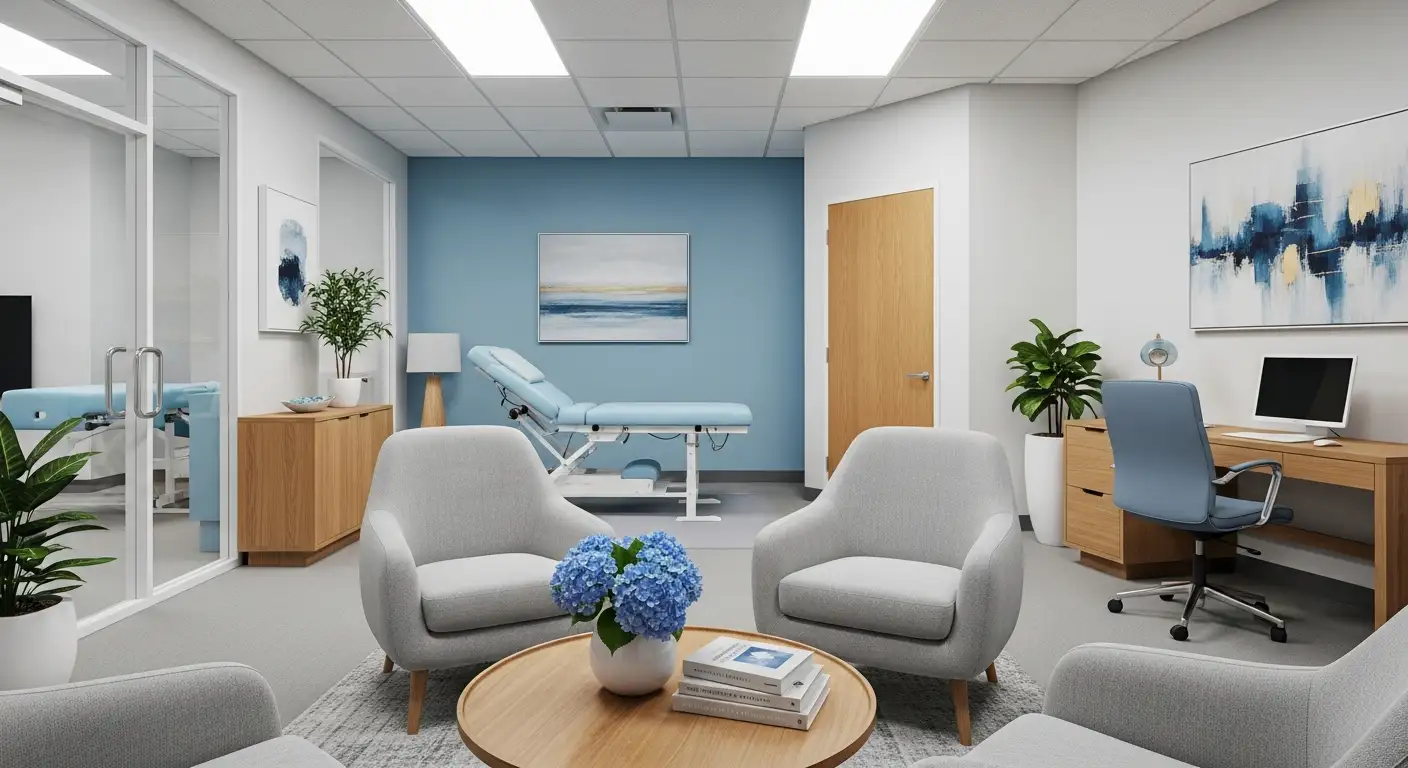Understanding Autism Representation

Analysis of "The Good Doctor"
"The Good Doctor" is a popular television show that has garnered significant attention for its portrayal of Dr. Shaun Murphy, a main character believed to have autism. Premiering on Sep. 25, 2017, on ABC, the show features Freddie Highmore as Dr. Shaun Murphy, an up-and-coming surgeon with autism and savant syndrome. The show attempts to provide insight into the experiences of individuals on the autism spectrum, shedding light on their perspectives and abilities [2].
The portrayal of Dr. Murphy challenges common stereotypes about individuals with autism. For instance, the character demonstrates empathy and the ability to care for others, which counters the misconception that people with autism lack emotional depth. The show also touches on various important topics beyond autism, such as employment for individuals with disabilities, relationships in the workplace, safety, and different learning styles.
Impact on the Autism Community
The representation of autism in "The Good Doctor" has sparked a wide range of discussions among viewers and the autism community. The show attempts to accurately depict the challenges and strengths of individuals with autism, contributing to a broader understanding of the condition. Through Dr. Murphy's character, the show sheds light on the abilities and perspectives of those on the autism spectrum, fostering a sense of inclusivity and empathy among viewers.
The impact of "The Good Doctor" on the autism community is multifaceted. While some praise the show for bringing autism into the mainstream media and promoting awareness, others express concerns about the accuracy and depth of the portrayal. The discussions generated by the show have encouraged a more nuanced conversation about autism, highlighting the need for authentic representation and the inclusion of autistic individuals in media production.
For more information on how different representations impact the autism community, explore our article on autism in Italy.
By fostering discussions around autism and related topics, "The Good Doctor" plays a significant role in breaking down misconceptions and promoting inclusivity. To further understand the complexities of autism representation in media, it's essential to consider the views and experiences of autistic individuals themselves. For resources on how to support children with autism in real-world settings, visit our article on what is action behavior centers?.
Critiques and Praises
The portrayal of autism in "The Good Doctor" has sparked diverse reactions, especially regarding its accuracy and realism in depicting an autistic character. These critiques and praises highlight the complexities of representing autism in mainstream media.
Mixed Opinions on Accuracy
The accuracy of autism representation in "The Good Doctor" has been met with mixed reviews. While the show has been lauded for bringing autism into the spotlight, it has also faced criticism for its portrayal of the condition. According to Gold Star Rehabilitation, the series has succeeded in raising awareness about autism but has also been noted for some inaccuracies.
Some members of the autism community argue that the character Dr. Shaun Murphy, played by neurotypical actor Freddie Highmore, often embodies stereotypes rather than offering a nuanced depiction of autism [3]. This has led to concerns that the show reinforces misconceptions about autistic individuals.
Moreover, the lack of openly autistic individuals in the writer's room or cast has been cited as a significant shortfall. This absence has contributed to a portrayal that some feel alienates rather than accurately represents autistic people [4].
Commendations for Realism
Despite the criticisms, "The Good Doctor" has also received commendations for its realistic elements. The show has been praised for shedding light on the unique abilities and challenges faced by individuals on the autism spectrum. This portrayal has helped in promoting a broader understanding of autism among the general public.
Mary Doherty, founder of Autistic Doctors International, notes that the show creates awareness but also emphasizes the need to depict how autistic individuals often "mask" their autism in neurotypical environments [5]. This aspect of the portrayal has been appreciated as it reflects a genuine struggle faced by many autistic people.
Additionally, the show's focus on the professional life of an autistic surgeon has been lauded for challenging the assumption that autistic individuals cannot excel in demanding careers. This positive representation can inspire and encourage individuals on the spectrum to pursue their aspirations.
The discussion around the accuracy and realism of "The Good Doctor" underscores the importance of authentic representation. For more insights on autism and its portrayal, explore our articles on what is action behavior centers? and why do autistic people wear headphones?.
Character Exploration
Dr. Shaun Murphy's Traits
Dr. Shaun Murphy, the protagonist of "The Good Doctor," is a character who brings a multidimensional portrayal of autism to the screen. Diagnosed with autism and savant syndrome, Dr. Murphy exhibits several traits often associated with these conditions. However, the character also showcases unique characteristics that challenge many common misconceptions.
- Exceptional Memory: Dr. Murphy's savant syndrome is highlighted through his remarkable memory and ability to recall intricate medical details, which aids him significantly in his role as a surgeon.
- Social Challenges: He faces difficulties in social interactions, often struggling with non-verbal cues and social norms, which is a common trait in individuals with autism.
- Empathy and Care: Contrary to the stereotype that individuals with autism lack empathy, Dr. Murphy demonstrates a profound capacity to care for his patients. In one poignant scene, he shows an emotional response to a patient's suffering, challenging this misconception [1].
Challenging Stereotypes
Dr. Shaun Murphy's character in "The Good Doctor" plays a crucial role in challenging and breaking down stereotypes associated with autism. The show addresses several key misconceptions:
- Empathy: One of the most significant stereotypes is that people with autism lack empathy. Dr. Murphy's portrayal contradicts this, showing his ability to connect and care deeply for others [6].
- Professional Competence: The series highlights Dr. Murphy's exceptional skills as a surgeon, emphasizing that individuals with autism can excel in high-pressure, complex professions.
- Emotional Connection: Viewers, particularly those within the autism community, have resonated deeply with Dr. Murphy's character, fostering a sense of connection and understanding [6].
For more information on autism representation and the importance of breaking down misconceptions, visit our articles on why do autistic people wear headphones and the autism risk calculator.
By exploring these traits and the ways in which "The Good Doctor" challenges stereotypes, the character of Dr. Shaun Murphy offers a more nuanced and authentic representation of autism, contributing to greater understanding and inclusivity.
Importance of Authentic Representation

Breaking Down Misconceptions
Authentic representation of autism in TV shows like "The Good Doctor" is essential for multiple reasons. Firstly, it helps to break down stereotypes and misconceptions surrounding autism [2]. Viewers often have limited understanding of autism spectrum disorder (ASD), and accurate portrayals can educate the public, fostering a more inclusive and accepting society.
"The Good Doctor" serves as a platform for increasing autism awareness, challenging stereotypes, and encouraging viewers to recognize the capabilities and contributions of individuals with autism. When audiences see characters like Dr. Shaun Murphy, they are more likely to question their preconceived notions about autism, leading to greater empathy and understanding.
Promoting Inclusivity
Promoting inclusivity is another crucial aspect of authentic representation. The show "The Good Doctor" is commended for discussing important topics beyond autism, such as employment for individuals with disabilities, relationships in the workplace, safety, and different learning styles. By addressing these issues, the show contributes to a broader understanding of diversity and inclusion.
The character Dr. Glassman emphasizes the importance of treating people with respect and providing opportunities for those with limitations. This highlights the value of hiring individuals like Dr. Shaun Murphy and giving hope to others facing similar challenges.
With a current prevalence of 1 in 36, autistic people are a large and mostly untapped audience, potentially a significant talent pool [4]. There is a need for more diverse and authentic portrayals of autistic individuals in media, representing various races, genders, sexualities, and classes, to better reflect the true diversity within the autistic community.
Authentic representation in media can lead to real-world changes, encouraging inclusive practices in various settings, from schools to workplaces. To learn more about supporting autistic individuals, check out our article on what is action behavior centers.
By breaking down misconceptions and promoting inclusivity, shows like "The Good Doctor" play a vital role in shaping a more understanding and accepting world for individuals with autism. For more information on autism awareness and support, visit our resources on why do autistic people wear headphones and autism risk calculator.
Diversity in Portrayals
Accurate and multifaceted representation of autistic individuals in media is crucial. While "The Good Doctor" has made strides in depicting autism, there is an ongoing need to diversify these portrayals.
Need for Authenticity
Authentic representation is essential to validate the experiences of autistic individuals and to educate the broader public. The show was seen as a positive step towards depicting autistic individuals as versatile, empathetic, and complex characters, moving away from stereotyped portrayals. However, there is a consensus that more work is needed to accurately represent the autism spectrum.
Incorporating autistic actors and consultants can enhance authenticity. For example, Chloé Hayden's portrayal of a queer autistic student in "Heartbreak High" is considered one of the best representations of an autistic character [4]. Such portrayals help to break stereotypes and offer a more genuine portrayal of autistic experiences.
Portraying Versatile Characters
Diverse and versatile characters are needed to reflect the true variety within the autistic community. With a prevalence of 1 in 36, autistic individuals represent a significant and diverse audience. Media should aim to showcase this diversity by including characters of various races, genders, sexualities, and socioeconomic backgrounds.
The series "The Good Doctor" has shown promise by discussing important topics such as employment for individuals with disabilities, workplace relationships, and different learning styles. Bringing on an autistic actor, Kayla Cromer, as Charlie Lukaitis, an autistic med student, was a step towards genuine inclusion, though the potential to explore the diversity of the autistic experience remained mostly unrealized.
For more information on autism and related services, visit what is action behavior centers? and why do autistic people wear headphones?. Understanding the need for diverse portrayals can help in creating inclusive and representative media content.
Moving Towards Authenticity

The portrayal of autism in media is crucial for shaping societal perceptions and understanding of the condition. To enhance the authenticity and accuracy of these representations, several steps can be taken.
Improving Representation
One of the primary concerns in the autism community is the portrayal of autistic characters by neurotypical actors. In "The Good Doctor," Dr. Shaun Murphy, played by Freddie Highmore, has received mixed reviews for his depiction of autism. While some commend his performance, others argue that having autistic actors play autistic roles would result in more genuine and nuanced portrayals. Authenticity in representation can prevent over-dramatization and generalization, which are common issues in media portrayals of autism and savant syndrome.
To improve representation, media creators should involve autistic individuals in the creative process. This can include consulting with autism experts, hiring autistic scriptwriters, and ensuring that the portrayal of autistic characters is both respectful and accurate. This approach not only enhances the quality of the representation but also provides autistic individuals with opportunities in the entertainment industry.
Inclusion of Autistic Individuals
The inclusion of autistic actors in roles that represent their own experiences is a significant step towards authenticity. For example, in the final season of "The Good Doctor," the show introduced Kayla Cromer, an autistic actor, playing Charlie Lukaitis, an autistic med student. This inclusion was a positive move towards genuine representation, although the potential to fully explore the diversity of the autistic experience remained largely untapped.
Incorporating autistic individuals into the cast and crew ensures that the portrayal of autism is informed by real-life experiences. This can help break down stereotypes and promote a more nuanced understanding of autism. Media creators should also prioritize diverse portrayals, showing that autism affects individuals differently and that there is no single "autistic experience."
By taking these steps, media can move towards genuine and inclusive representation, providing viewers with a more accurate understanding of autism. For further insights into autism and its representation, explore our articles on why do autistic people wear headphones, autism in Italy, and the autism risk calculator.
References
[1]: https://www.autismspeaks.org/blog/my-review-good-doctor-adult-autism
[2]: https://www.goldstarrehab.com/parent-resources/does-the-good-doctor-have-autism
[3]: https://www.autismontario.com/news/autistic-adults-review-good-doctor
[4]: https://time.com/6981442/the-good-doctor-finale-autistic-representation/
[5]: https://www.washingtonpost.com/lifestyle/2023/05/11/good-doctor-memes-autism/
[6]: https://autismcoe.com/blog/aba-therapy/unraveling-the-character-is-the-good-doctor-autistic/









